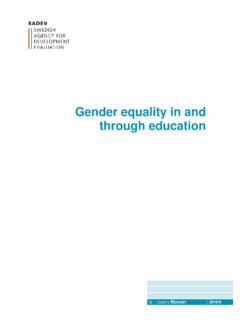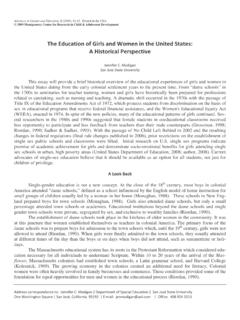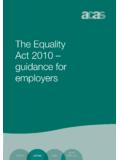Transcription of hrba to health - WHO
1 Why a human rights-based approach? A human rights-based approach ( hrba ) aims to support better and more sustainable development outcomes by analyzing and addressing the inequalities, discriminatory practices (de jure and de facto) and unjust power relations which are often at the heart of development problems. Under a human rights-based approach, development efforts are anchored in a system of rights and corresponding State obligations established by international law.
2 Civil, cultural, economic, political and social rights provide a guiding framework for development plans, policies and processes. A hrba also appreciates the importance of capacity development. A UN common understanding of a human rights-based approach Human rights-based approaches have been advanced by a broad range of stakeholders. Recognizing the need for coherence of approaches in the context of UN inter-agency collaboration, the UN Common Understanding on a Human Rights-based Approach was agreed upon in 2003.
3 The UN common understanding has served as a reference point and guiding framework for many other partners, including governments, bilateral agencies and non-governmental organisations. A human rights-based approach is one of the key programming principles guiding UN common country programmes, and has been integrated into the Guidelines for UN Country Teams on Preparing a Common Country Assessment (CCA) and United Nations Development Assistance Framework (UNDAF).
4 Nevertheless, stakeholders are increasingly calling for sector and issue specific guidance on the practical application of a human rights-based approach. Key elements of a hrba to health A human rights-based approach to health specifically aims at realizing the right to health and other health -related human rights. health policy making and programming are to be guided by human rights standards and principles and aim at developing capacity of duty bearers to meet their obligations and empowering rights-holders to effectively claim their health rights.
5 Elimination of all forms of discrimination is at the core of a hrba . gender mainstreaming is a key Policy commitments to mainstreaming human rights in development The UN Programme of Reform (1997) sets out human rights as a cross-cutting issue in all UN activities and urges its mainstreaming across the UN system. At the 2005 World Summit, UN Member States unanimously resolved to integrate human rights into their national policies and gave explicit support for the integration of human rights within the UN system. The Accra Agenda for Action (2008), which aimed to accelerate and deepen implementation of the Paris Declaration on Aid Effectiveness, commits developing countries and donors to "ensure that their respective development policies and programmes are designed and implemented in ways consistent with their agreed international commitments on gender equality , human rights, disability and environmental sustainability.
6 " The UN Common Understanding on a Human Rights-based Approach GOAL: All programmes of development cooperation, policies and technical assistance should further the realization of human rights as laid down in the Universal Declaration of Human Rights and other international human rights instruments. PROCESS: Human rights standards and principles guide all development cooperation and programming in all sectors and phases of the programming process. OUTCOME: Development cooperation contributes to the development of the capacities of duty-bearers to meet their obligations and/or of rights-holders to claim their rights GOAL PROCESS OUTCOME A HUMAN RIGHTS-BASED APPROACH TO health strategy to achieving gender equality and eliminating all forms of discrimination on the basis of sex.
7 Building on the UN Common Understanding on a Human Rights-based Approach, the below sections identify core aspects of the hrba elements: goal, process and outcome. All programmes, policies and technical assistance should further the realization of human rights A hrba emphasizes that the ultimate goal of all health policies, strategies and programmes is to further advance the realization of the right to health and other health -related human rights as laid down in national and international human rights legislation.
8 Human rights standards provide guidance in defining the precise elements of a health objective. If the right to health and other health -related human rights are to be fully realized, policies and plans need to systematically integrate and further these rights. The right to health is recognized in several core international and regional human rights treaties and national constitutions. The International Covenant on Economic, Social and Cultural Rights (ICESCR), the Convention on the Elimination of All Forms of Discrimination against Women (CEDAW) and the Convention on the Rights of the Child (CRC) are some of the central human rights instruments for the protection of the right to health .
9 The Committee mandated to monitor the implementation of the ICESCR (Committee on Economic, Social and Cultural Rights) has interpreted the content of the right to health in the General Comment No. 14, available at OHCHR s web site: (Symbol)/40d009901358b0e2c1256915005090b e?Opendocument Among other essential points, General Comment No. 14 highlights that the right to health extends to both timely and appropriate health care and to the underlying determinants of health , such as safe and potable water, sanitation, food, housing, health related information and education, and gender equality .
10 These points highlight the importance of inter-sectoral action to effectively realize the right to health . Similarly, General Comment No. 14 explains that the four elements of availability, accessibility, acceptability and quality (AAAQ) are essential to the enjoyment of the right to health by all. Availability: functioning public health and health care facilities, goods, services and programmes in sufficient quantity Accessibility: non-discrimination, physical accessibility, economic accessibility (affordability), information accessibility Acceptability: respectful of medical ethics and culturally appropriate, sensitive to age and gender Quality.

















